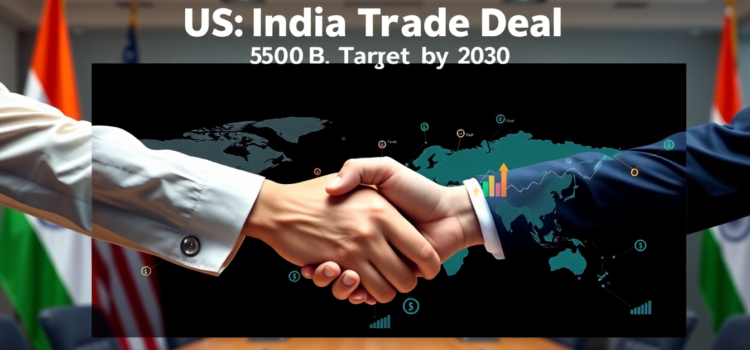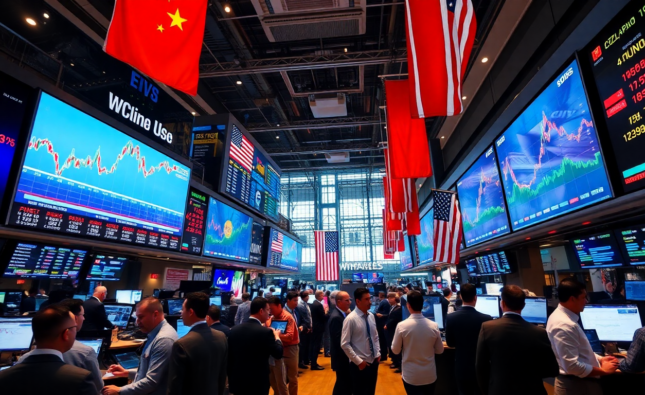
Modi and Vance Chart Path to $500 Billion US-India Trade by 2030

The United States and India have made a significant stride towards amplifying their economic partnership. Recently, the two nations finalized the Terms of Reference for a Bilateral Trade Agreement (BTA), setting an ambitious target: escalating bilateral trade to $500 billion by the year 2030. This agreement aspires to more than double the current trade volumes and foster a more integrated economic future.
Unpacking the US-India Bilateral Trade Deal Roadmap
This bilateral deal is more than just figures. It’s a comprehensive effort to enhance market access, minimize tariff and non-tariff barriers, and foster commitments across crucial sectors such as energy, critical minerals, and technology. In 2024, the U.S. reported a $45.7 billion goods trade deficit with India, reflecting a 5.1% increase since 2023. Efforts are underway to bridge this gap through strategic negotiations.
Modi Vance Trade Negotiations 2025: A Pause on Tariffs
Amidst recent tensions, characterized by the U.S. imposing 26% reciprocal tariffs on Indian goods, a 90-day pause on tariff hikes has been introduced. This tactical halt aims to smoothen diplomatic dialogues and focus on equitable trade practices. India’s strategic reduction in import duties on 8,500 industrial items, including U.S. exports like bourbon whiskey and Harley-Davidson motorcycles, further reinforces their commitment to resolving trade discrepancies.
Progress in the India US Trade Agreement
The groundwork for the BTA was laid during Prime Minister Modi’s meeting with President Trump in February 2025, which also launched the “U.S.-India COMPACT” initiative. This aims at boosting cooperation in military, commerce, and technology. The U.S. administration has underscored the necessity to rectify the lack of reciprocity in trade relations, ensuring new opportunities are equitable for entrepreneurs in both countries.
Envisioning the Future of the US-India Economic Partnership
With a focus on modernizing US-India trade relations and deepening strategic technologies collaboration, the ongoing negotiations are structured to deliver initial outcomes soon. This period of cooperation emphasizes mutual trust and a commitment to a results-driven agenda. The anticipated completion not only promises to resuscitate markets for workers and farmers but also aligns with broader defense and economic integration goals, potentially discussed during the upcoming Quad summit.
Conclusion
In conclusion, the ongoing enhancements in US-India trade roadmap highlight an era of bilateral cooperation poised to immensely benefit both economies. With a shared vision of reaching a $500 billion trade target by 2030 and temporarily paused tariffs, India and the United States are redefining their trade relationship. This mutually beneficial agreement is expected to not only boost economic growth but also generate jobs and innovation in both countries.
For further updates on this evolving trade relationship, stay tuned. L encourage readers to share insights, engage in discussions, or subscribe to our newsletter for the latest developments.
FAQ
What is the target for the US-India trade deal by 2030?
The target for the US-India trade deal is set at $500 billion by 2030.
What were the recent tensions in US-India trade?
Recent tensions involved the U.S. imposing 26% reciprocal tariffs on Indian goods, but there is currently a 90-day pause on tariff hikes.
Why is the US-India bilateral trade agreement important?
This agreement aims to enhance market access, reduce barriers, and foster commitments in critical sectors to increase equitable trade practices.
When were the Modi Vance trade negotiations initiated?
The negotiations began following Prime Minister Modi’s visit to President Trump in February 2025, which also initiated the U.S.-India COMPACT initiative.
How will the trade agreement impact workers and farmers?
The agreement aims to create fair opportunities and open new markets, thus potentially benefiting workers and farmers in both India and the United States.










Comments